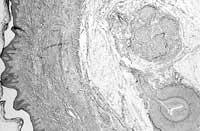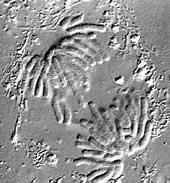Understanding the functioning of cells by analyzing protein paths
2011/09/01 Azkargorta, Mikel - Biokimika eta Biologia Molekularreko Saila EHUko Zientzia eta Teknologia Fakultatea Iturria: Elhuyar aldizkaria
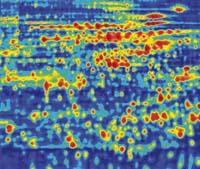
Cells are basic elements of life, the units of living beings: all living beings are constituted by cells. For example, human beings are said to be made up of 70 billion cells. Each one fulfills specific functions in the organism, developing thousands of different processes that guarantee the survival of the being.
Cells, as they are also living beings, "are born", grow and die; to survive they need to feed and multiply, among other things. To carry out all the functions and events, different processes are produced within the cell. For example, through a complex set of reactions called metabolism, cells get the energy needed to live. Following the cell cycle, proliferation occurs and, finally, when cells are too old, they die through the process called apoptosis.
The participation of proteins in all processes is essential. Proteins are molecules with the activity necessary to regulate the functioning of cells. Each of the mentioned episodes is produced by the regulation of a group of proteins whose activity is fundamental for the orderly and effective development of processes.
But proteins do not perform their work in isolation, but they organize very complex interaction networks between proteins called pathway or paths. Information for the production of proteins is stored in a molecule called DNA, organized in units called genes. The genes act as molds of proteins and each of them can produce one or more types of proteins. The human genome has about 25,000 genes, so a human cell can produce thousands of different proteins. Each of them will have a series of specific functions in the cell that, as indicated, will be organized in interaction networks called trails.
Pathways of proteins
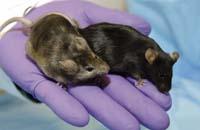
Consider the regulation of the cell cycle as an example of the functioning of a path. As has already been indicated, the cell cycle is a process that cells continue to double and is essential for the cellular renewal of an organism. Within the cell, and greatly simplifying things, there are proteins that bet on the cell cycle and others that oppose it. Thus, in a first level of regulation, the family of proteins E2F favors the cell cycle. The proteins of the RB family interfere in the activity of E2F proteins, that is, they act against the cell cycle.
At a next level of regulation, proteins called CDK inactivate the proteins of the RB family, so they favor the cell cycle. On the other hand, proteins called CKI interfere in the activity of CDK acting against the cell cycle. Therefore, at this level, two other elements are included, and the possibilities of process regulation are diversified.
Although the actual complexity is much greater than the above, this simple example serves to understand the paths that define the fate of the cell. Proteins function as a switch: Depending on the protein that "turns on" or "turns off", it can stimulate both an effect and the opposite within the cell. For this type of processes to be effective, one thing is essential: precision. If the activity of a certain protein is greater or less than necessary, problems may arise that compromise the proper functioning of the cell and, if not avoided in time, may condition the survival of the organism. Therefore, these processes must be studied and understood in depth to understand and combat the damage that occurs as a result of their malfunction.
Mice in the laboratory
With this objective, knockout mice (KO or -/-) were developed. All cells of a KO mouse have interrupted the function of a gene of interest. To do this, due to genetic engineering techniques, this gene is destroyed at the embryonic level. In this way, the destruction of the gene results in adult mice with the lack of proteins it produces. The disappearance of a protein will have a global consequence: not only will its activity disappear, but it will also change the activity of the proteins it regulates. The analysis of these changes allows to analyze in depth the functions that this protein plays in the organism.
In this work the mouse E2F2 knockout (E2F2-/-) have been used. These mice are destroyed by the E2F2 gene, so they also have suspended the activity of the E2F2 protein. Although initially they develop normally, with time they suffer some problems. Its characterization showed that the E2F2 is essential for the proper functioning of T lymphocytes. T lymphocytes are an important part of the body's defense system and respond to elements outside the organism destroying them.
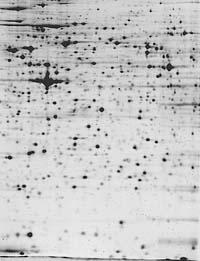
T lymphocytes without E2F2 are much more sensitive than T lymphocytes with E2F2. For this reason, they oppose the body itself they must defend. As a result, mice suffer a severe syndrome, very similar to Systemic Lupus Erythematosus (SLE) of humans, and after several problems die before mice with normal activity E2F2.
E2F2, therefore, opposes the activation of T lymphocytes of mice, but which mechanism does it respond to? To illustrate this, a proteomic approach has been used in this paper. Proteoma defines the set of proteins of a cell in specific times and circumstances. Protein includes, therefore, techniques of characterization and analysis of protein groups.
Reading the presence of proteins
Basically, in this study, the protein content of the T cells of mice has been analyzed, which has been done in two different situations: When E2F2 activity is normal (control state called WT) and there is no E2F2 activity ( E2F2-/- ). Protein groups have been compared and the proteins that are modified in the case of the disappearance of E2F2 activity have been identified. Thus, by determining the modified proteins, the mechanism that follows E2F2 can be analyzed in the T cells of the mice.
For this purpose, two-dimensional electrophoresis techniques (2SD) and mass spectrometry (MS) were used. The 2DE is a technique that guarantees the simultaneous analysis of thousands of proteins very useful for the comparison of proteins. The proteins are distributed forming spots on a gel holder. In each of the spots a single protein will be distributed and the volume of the spots is directly proportional to the amount of proteins stored in it. Therefore, by comparing the volume of the spots, variations between the proteins analyzed can be detected.
But although 2DE says that stain is different, it does not say what protein is distributed in that stain. For this purpose, mass spectrometry (MS) is essential. Mass spectrometers are apparatus capable of determining the mass of chemical molecules with great precision. Based on this principle, and through database searches, proteins distributed in differential spots are identified.
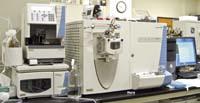
Among the modified proteins when E2F2 disappeared were the proteins COR1A, GRB2, ARHGDIA and PAK2 that participate in the activation trails of the T lymphocytes. That is, it was found that T lymphocytes without E2F2, without any stimulation, have prepared the machinery (proteins) of activation. This conclusion corresponds to the high sensitivity of E2F2-/- lymphocytes. The experiment has served to identify some of the switches that E2F2 "turns on" or "turns off" to regulate the activation of T lymphocytes.
In summary, our results show that this approach is useful to understand the mechanism that follows the E2F2 and is an example of research that can be used to introduce itself into cell function.
BIBLIOGRAPHY BIBLIOGRAPHY

Gai honi buruzko eduki gehiago
Elhuyarrek garatutako teknologia



